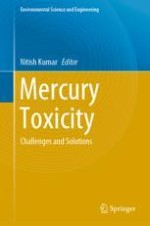2023 | OriginalPaper | Buchkapitel
8. Microbial Remediation of Mercury: An Overview
verfasst von : Marwa Eltarahony, Eman Ibrahim, Ghada Hegazy, Amira Sabry
Erschienen in: Mercury Toxicity
Verlag: Springer Nature Singapore
Aktivieren Sie unsere intelligente Suche, um passende Fachinhalte oder Patente zu finden.
Wählen Sie Textabschnitte aus um mit Künstlicher Intelligenz passenden Patente zu finden. powered by
Markieren Sie Textabschnitte, um KI-gestützt weitere passende Inhalte zu finden. powered by
